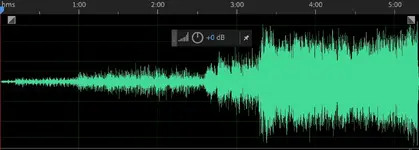D
Deleted member 203901
Guest
Hello, I wanted to ask a question about mixing, especially how much compression/limiting is appropriate for a mix....I've been noticing an interesting pattern lately : I get positive feedback from my friends on my mix that has some decent amount of visible peaks (they're mostly kicks and snares, among others, that are visible on the audio waveform) while they are not very excited about my mixes where I've squashed everything and the waveform visually looks like one big block with nothing poking out (that smooth waveform) I think maybe when we listen to music we like to have things "jump at us" (I think CLA said something similar in an interview relating to compression, or overcompression to be more precise) I'm fully aware though that songwriting/arrangement and production are obviously the most important thing when it comes to music quality, but I'm asking this question purely from a mixing standpoint...btw just wanted to share this track I completed yesterday (it's remix I completed yesterday for the Metapop DAHI SKETCHES Remix Challenge) on the visual waveform of this track, I can clearly see lots of sharp visible peaks (whereas before I would usually squash everything by LOTS of compression and 2 limiters in a row ) Just want to hear what your thoughts are on this topic
) Just want to hear what your thoughts are on this topic  btw here's the remix link:
btw here's the remix link:
 ) Just want to hear what your thoughts are on this topic
) Just want to hear what your thoughts are on this topic  btw here's the remix link:
btw here's the remix link:
Last edited by a moderator:

